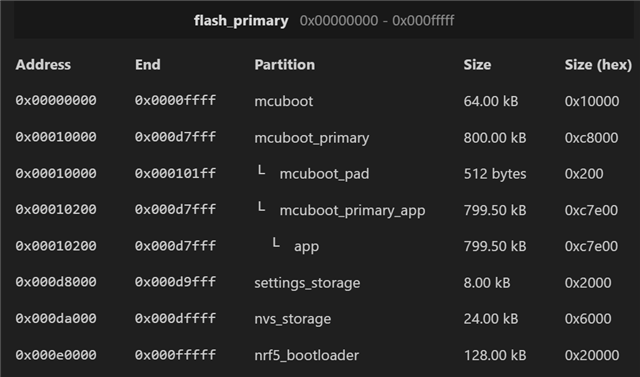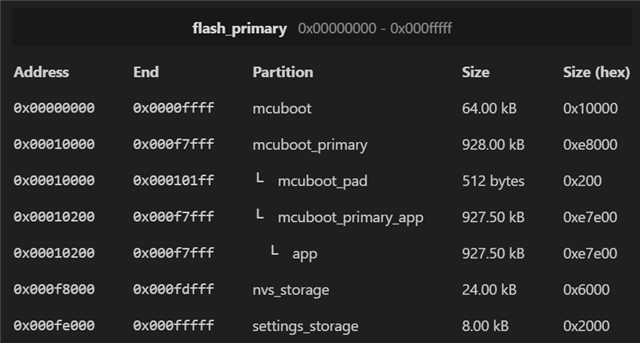Hello,
I use SDK v2.9.0 with nRF52840 and my application is based on peripheral_uart example.
Have I understood correctly that nRF52840dongle has preloaded (by Nordic) nRF5_MBR (@0x00000000) and nRF5_bootloader (@0x000fffff) and if I just add MCUboot to this peripheral_uart example, then MCUboot is second stage bootlader (@0x00001000)?
I assume that due that project is based on nRF52840dongle, that adds those nrf5_mbr and nrf5_bootloader partitions.
So my question is, if I want to use just single slot application with MCUboot as bootloader and I need only MCUboot:SerialRecovery (over USB; activated with push button during bootup) and no FOTA etc. what/how I should modify the project to get rid off nrf5_mbr and nrf5_bootloader and locate MCUboot to 0x00000000?
Or is it so that nrf5_mbr and nrf5_bootloader must exists always?
Is there any harm, if I get rid off nrf5_mbr and nrf5_bootloader? Yes, I understand that they are lost forever and I must make MCUboot to work and I must load MCUboot e.g with Segger J-Link (and application I can load either using J-Link or MCUboot:SerialRecovery).




